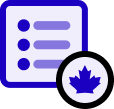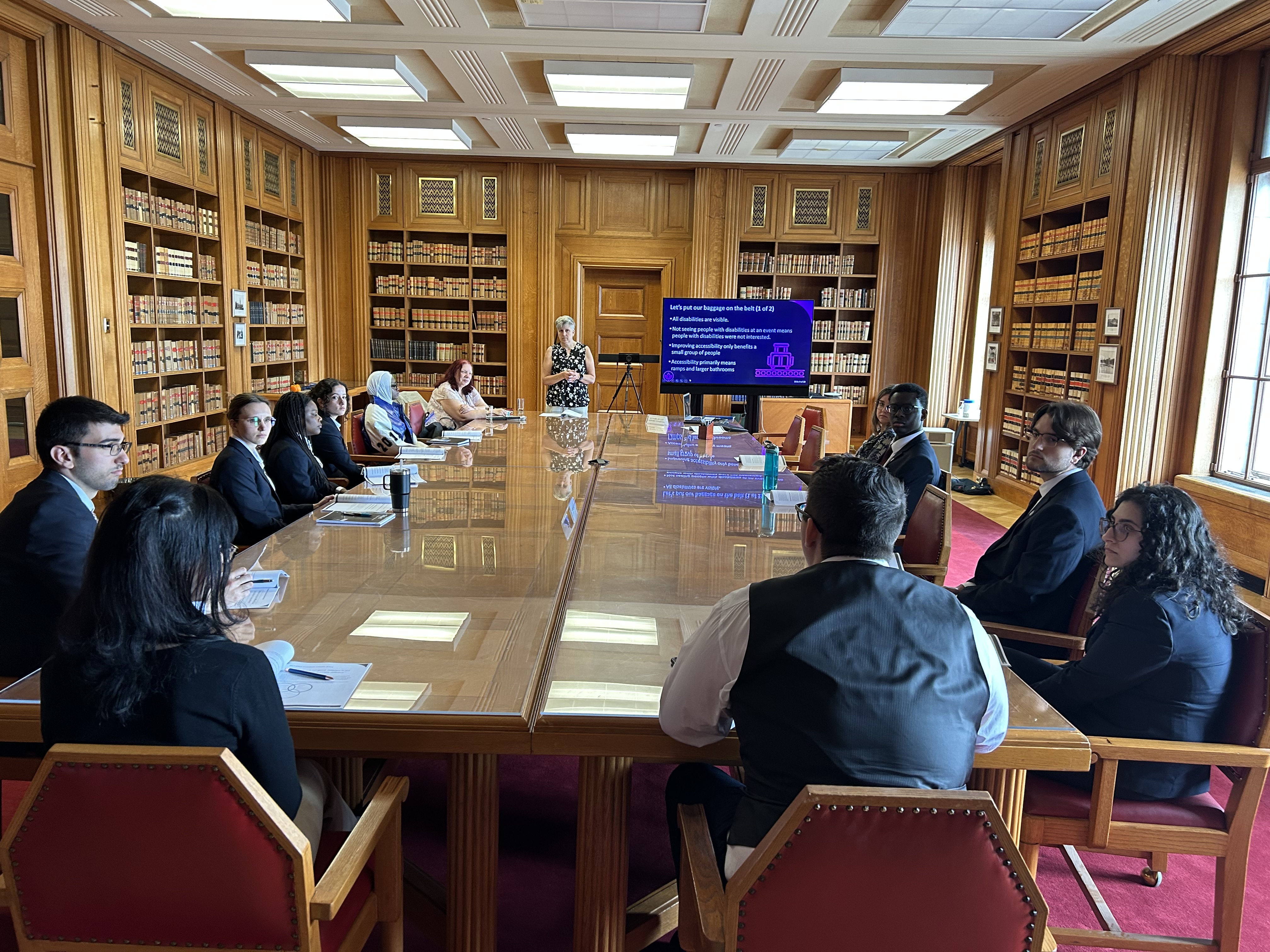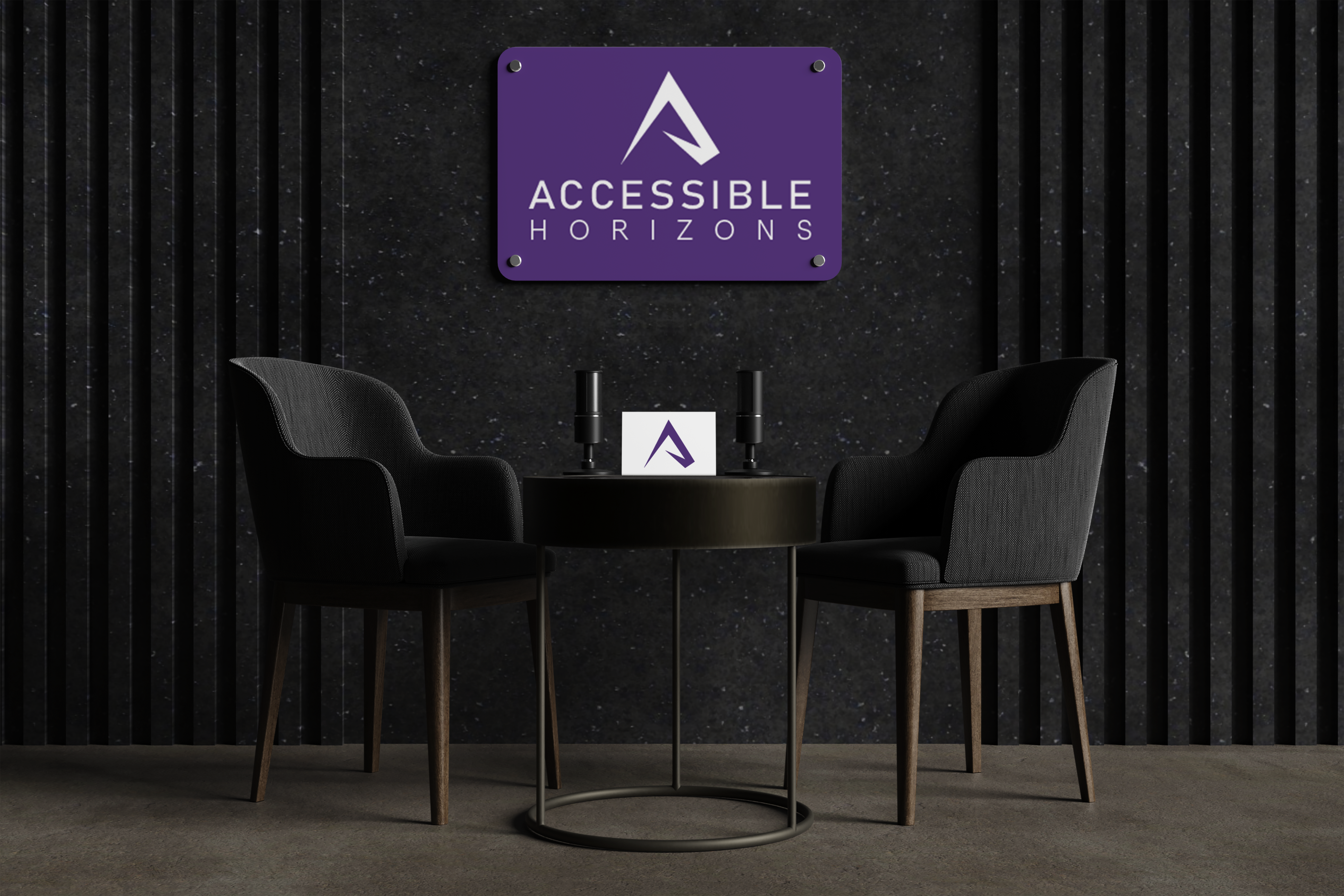July 2025 AAACT Now for AccessibilityNewsletter
In this edition: We share important information, resources, and ideas to help you stay proactive and inclusive all year long.
As we wind down for the summer and enjoy a slower pace, it’s the perfect time to reflect and recharge, and to start planning for the seasons ahead. Whether you’re planning training, updating your digital spaces, or thinking about inclusive design, accessibility should remain front and centre. In this issue, we’ll share important information, resources, and ideas to help you stay proactive and inclusive all year long.
3D Printing: A Handy Addition to Your Accessibility Toolkit

3D printing has been creating some genuine excitement in accessibility circles, and honestly, it’s easy to see why. While it’s not going to solve every workplace barrier, it offers a compelling supplementary option for creating personalized tools when existing solutions don’t quite hit the mark.
From customizing adaptive switches that can replace the need for a keyboard or mouse, to creating custom dexterity aids that make handling office supplies easier, or even designing personalized braille labels for your workspace, these printed solutions can fill the gaps that standard products miss. While initially designed for one person, these tools often end up helping colleagues with similar needs. Moreover, 3D printing lets us create and share these tools quickly and affordably, bridging the gap until more permanent solutions become available.
At AAACT, we help GC employees find workplace accommodations tailored to their individual needs. While 3D printing may be part of the conversation, our team focuses on identifying the right combination of tools, whether that’s established adaptive devices, software solutions, or occasionally, a custom-printed aid, to create workspaces where everyone can do their best work.
To learn more about the AAACT Program, visit How CAN AAACT Help You?.
Accessibility by Default: Building Inclusive Digital Experiences from the Ground Up with GC Forms

At the heart of inclusive digital services lies a simple but powerful approach: accessibility by default. Rather than fixing or adding accessibility features after development, integrating accessibility from the start ensures a smoother, more efficient process and a better result for all users.
Recently, our AAACT team had the pleasure of welcoming our colleagues from GC Forms, at the Canadian Digital Service, as guests on our Accessible Horizons podcast. Together, we explored how GC Forms was created with accessibility at its core. Since 2021, it has evolved into a dynamic tool enabling government employees to build accessible forms tailored to their needs.
What sets GC Forms apart is its commitment to making accessibility the default. Designers and developers collaborated early to identify potential issues and define requirements before coding began. While ensuring WCAG 2.1 AA compliance, they went further by using a collaborative design tool and conducting automated and manual testing, including real user feedback. Third-party testing also helped uncover additional issues. This approach integrated planning, coding, and testing from the very start. One key takeaway is that while meeting standards is important, human intervention and user testing are essential to truly understand and address real user needs and experiences.
Looking ahead, GC Forms is focusing on improving post-publication editing, managing multiple forms across teams, and maintaining its commitment to accessibility through ongoing feedback and iteration.
If you’re a public servant interested in integrating accessible tools into your work, we invite you to check out GC Forms; it’s free! You can also learn more about the product by attending one of their upcoming demos.
For the full conversation with the GC Forms team, stay tuned for episode 6 of Accessible Horizons podcast.
Creating an Inclusive Workplace Culture: Advancing Culture Change and Accessibility at the Supreme Court

As part of AAACT’s ongoing commitment to promote disability inclusion across the public service, we recently delivered a workshop titled Creating an Inclusive Workplace Culture to tour guides at the Supreme Court of Canada. This session aimed to deepen participants’ understanding of how a positive workplace culture supports inclusion for persons with disabilities, not only within the public service, but also in the experiences of Canadians who visit. By fostering respectful, accessible, and inclusive interactions, we ensure that everyone, regardless of ability, feels welcomed and valued.
The workshop covered the three pillars of disability inclusion, environment, culture, and individual adjustments, highlighting how each contributes to breaking down barriers. Participants explored the power of inclusive language in challenging ableism and learned practical strategies to become effective allies. By embedding accessibility into daily practices and public interactions, tour guides are now better equipped to create inclusive experiences for all visitors, helping to build a more equitable and welcoming environment for both employees and the public they serve.
To learn more and schedule this training session for your team, contact us at aaactlearning-aatiaapprentissage@ssc-spc.gc.ca.
Let’s Take the Accessibility Journey
The federal legislative and policy frameworks set out broad fundamental principles of human rights and equity. The Accessible Canada Act (2019) builds on those principles by requiring that federal institutions eliminate or avoid the creation of barriers to accessibility and the full participation of persons with disabilities. Now, let’s think about what it means to turn those principles into concrete actions.
Let’s take an accessibility journey!
Our destination? A work environment where federal public service employees or candidates who may have a disability can succeed and feel valued.
So, where do we start?
Accessibility is not the end of the journey. It is not a separate aspect of the journey either. Accessibility cannot be ‘turned on’ at the end of the process. Accessibility requires deliberate planning and frequent check-ins with people with lived experience. There is no magical solution that achieves perfect accessibility. Yet, accessibility and inclusive design benefit everyone.
The journey of creating accessible experiences begins with:
- Recognizing that every individual is unique and, with the right supports, brings a valuable contribution to the organization.
- Learning about the different aspects of inclusive design (physical space, documents and systems, communications, business processes, etc.).
- Planning and identifying the measures and resources to build in accessibility from the start and throughout the process.
- Developing or designing processes and products that meet modern accessibility standards. For example, select a virtual meeting platform which is widely recognized for its accessibility and routinely use its accessibility features (e.g., captioning, transcription, accessible method for document sharing).
- Avoiding the common mistake of designing a process or product, thinking that you will “make it accessible” once it is finalized.
- Along with general accessibility measures, such as accessible workspaces and documents, taking the time to find out about individual needs for accommodation and how to address them.
Conversations That Matter: Unlocking Talent Through Inclusion
In today’s diverse workplaces, inclusion isn’t just a value, it’s a leadership skill. It goes beyond policies and programs, it’s about everyday conversations that shape an environment where every employee, including those with disabilities, feels valued and empowered to contribute their best.
Why Conversations Matter
True inclusion grows through authentic, ongoing dialogue. When managers learn to have open, meaningful conversations about accommodations, challenges, and strengths, they reveal hidden talents and remove barriers. Each conversation is an opportunity to foster a workplace where diversity thrives and drives success.
Empowering Managers with Practical Training
Our workshop, Conversations That Matter: Unlocking Talent Through Inclusion, equips managers with practical tools and real-world scenarios. Participants learn how to:
- navigate delicate topics around workplace accommodations;
- recognize and remove barriers to inclusion;
- foster a team culture that values diverse strengths and perspectives;
- identify helpful resources.
If you want to develop inclusive leadership skills and create a workplace where everyone can succeed, this course is for you. To learn more or schedule training, contact us at aaactlearning-aatiaapprentissage@ssc-spc.gc.ca.
Don’t miss this opportunity to create meaningful change, one conversation at a time.
Research Opportunity: Get Involved!
Are you a person with a disability who has received accommodations supports from AAACT? Are you a coworker or manager of a person with a disability who has received accommodations supports from AAACT?
If so, researchers from the Inclusive Design for Employment Access (IDEA) Social Innovation Laboratory would like to hear from you!
IDEA is working with AAACT to develop anonymized case studies which highlight the benefits and costs clients have experienced in relation to the accommodations supports provided by AAACT.
If you are either a person with disabilities who has received such supports, or a manager/coworker of someone who has received supports and would like to participate or would like more information about this research, please contact the Research Coordinator Amie Richards at arichards@iwh.on.ca or the Principal Investigator Dr. Emile Tompa at etompa@iwh.on.ca
Getting to Work: Accessible Employment in Canada –Report from the Chief Accessibility Officer, 2024
The Chief Accessibility Officer has released the second report to the Minister responsible for the Accessible Canada Act. This important report underscores the need to remove barriers preventing individuals with disabilities from fully participating in the workforce.
Read the full report: Getting to Work: Accessible Employment in Canada –Report from the Chief Accessibility Officer, 2024
Accessible Horizons Live Event

The AAACT team is excited to invite you to our upcoming Accessible Horizons live event this July! This engaging event will explore key accessibility topics and provide valuable insights to support an inclusive workplace. Visit the AAACT learning web page to stay tuned for more information and event details as they become available.
Can’t join live? No problem! Accessible Horizons is also available as a podcast, so you can listen to the conversation anytime, anywhere. Simply visit the Accessible Horizons podcast web page to listen or subscribe on one of our available podcast platforms to stay updated with new episodes.
Digital Accessibility Hack – Making Accessible Emails

In today’s digital landscape, emails remain a powerful tool for communication. But amidst all the designs, links, and layouts, accessibility often gets overlooked. Creating accessible emails isn’t just a nice-to-have; it’s a necessity to ensure that your message reaches everyone, including those with disabilities. Accessible emails improve user experience, expand your audience reach, and show your commitment to inclusivity.
Here are some essential tips to craft accessible emails:
- Use descriptive subject lines: Make your subject line clear and concise, so recipients immediately understand the purpose of the email.
- Opt for HTML format as it offers several benefits, including structured content, text formatting, hyperlinks, and alternative text. Furthermore, using HTML format allows you to follow the accessibility guidelines like WCAG and EN 301 549.
- When creating a bilingual email, be sure to add a bookmark to let users skip to the section containing their language or choice.
- In a bilingual email, be sure to perform a language markup to help screen readers read the other language text properly. You can do this by highlighting the text you want to set to a different language, select the review tab, then select Language > Set Proofing Language.
- Plain language: Avoid overly complex writing styles, choose simple vocabulary, use short sentences, use an active voice, and define abbreviations the first time you use them.
- Choose accessible font sizes and styles: Opt for sans-serif fonts like Arial, Calibri, Verdana and Aptos. Ensure normal body text is 12 to 14 points. Avoid decorative or overly stylized fonts.
- Incorporate Alt Text for images: Include alternative text that briefly describes the relevant content of the image.
- Provide clear, clickable links: Use descriptive anchor text like “Download Report” instead of vague terms like “Click Here.”
- Testing for accessibility: While the accessibility checker is not a substitute for knowing how to create an accessible document, it can help identify some accessibility issues. Under the review tab, select > Check Accessibility.
Accessibility isn’t just about compliance; it’s about embracing diversity and ensuring equality in digital communication. By following these tips, you can design emails that resonate with all recipients, leaving no one behind.
Visit the Digital Accessibility Toolkit to learn more on Making Accessible Emails.
Shared Service Canada’s Feedback Mechanism
Do you have feedback, comments or suggestions on how to improve accessibility in our SSC workplace, policies, programs, or services? Our accessibility feedback process allows anyone who deals with SSC to provide feedback on the accessibility of our services. Share your feedback today to help us identify and reduce barriers and build more inclusive and accessible digital services. Provide feedback on accessibility at Shared Services Canada.
Contact us for more information about the AAACT Newsletter at our email: aaact-aatia@ssc-spc.gc.ca
Page details
- Date modified: